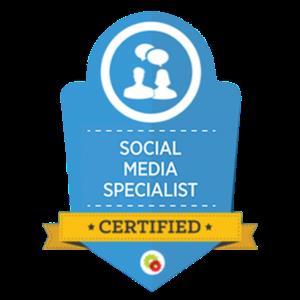
There’s something comforting and enjoyable about creating a routine where people know you, whether that’s a favorite coffee shop or place to walk or a local beer store where they call your dog by name.
Many businesses can create this personalized shopping experience to convert more browsers into buyers. But, it can be tough to do that online where you can’t look into a customer’s eyes or easily ask what they need as they browse digital shelves. Still, we regularly hear about the need for eCommerce personalization.
To tackle that opportunity, let’s define personalization, the best way to start implementing it, and methods to optimize your efforts.
Defining “personalization” in eCommerce
Personalization and customization can feel like the same thing, but some important distinctions exist. Breaking these out makes it easier to understand personalization and how it can apply in eCommerce operations.
For your website and sales efforts, personalization uses data and customer insights to craft a specific shopping experience for every customer. These efforts may include showing relevant products, serving recommendations, and adjusting content based on the customer’s past behavior.
Companies may also try personalizing service levels or selecting specific pop-ups and overlays based on customer status.

Customization, on the other hand, generally refers to customer-driven choices. These range from the obvious (selection or sorting by size, color, price, etc.) to detailed efforts specific to the individual (a customer chooses not to see certain types of products). When you think of customization as something helmed by the customer, you’ll start identifying ways to use their selections to craft personalized experiences.
How personalization creates a better shopping experience
To create a personalized shopping experience, eCommerce businesses need to invest in audience research. By understanding your customers and what they want, you can create an individualized experience that will convert browsers into buyers.
You’ll want to create as complete a picture of the shopper as possible. Ask core experience questions, including:
- What are their needs that you can and can’t address?
- What are their wants or things that tip them over the edge to make a purchase?
- What motivates them to make this purchase at this time?
- Why should they choose you to meet their specific needs and wants?
Once you understand your customers well, you can start creating a shopping experience tailored to them. Take learning about their immediate needs and wants. I
t’s easier to suggest the right products when you know what they’ve recently viewed or what ad they clicked on to get to your site. You’re building based on their tastes and refining suggestions based on what gets that second purchase.
Understanding why someone values your brand can also help you create personalized discounts or special deals that gain shoppers. If you’re known for customer service, you might leverage this for an ad tagline: “World-class customer service meets free shipping on every order over $20.”
It’s more than just a deal; it’s one couched in the language you know they appreciate. Tying it back to shipping and order support also reinforces your brand as one that cares about the customer.

Finally, it is important to ensure the customer feels valued and appreciated. Thank them for their business and promptly take care of any issues they may have. Creating a positive relationship with your customers ensures they keep returning for more.
3 steps to take to get started with personalization
To get started with personalization, businesses need to take three steps: collecting data, analyzing data, and implementing personalization.
1. Collect data
The first step is to collect data about your customers. This could include information such as their demographics, location, what devices they use, what pages they visit on your site, and what products they are interested in. There are a number of ways businesses can collect this data, such as through website cookies, surveys, and customer loyalty programs.
2. Analyze data
Once you have collected data about your customers, it is important to analyze it to understand their needs and preferences. This will help you determine how to best personalize their shopping experience. Several tools are available to help with this analysis, such as analytics software and customer segmentation tools.
3. Implement personalization
The final step is to implement personalization into your eCommerce store. This could include creating a personalized homepage, recommending similar products, using data to segment customers into different groups, or offering discounts. By personalizing the shopping experience, businesses can increase conversion rates and average order value.

The top 5 ways to personalize the shopping experience
Personalization can be an incredibly complex experience or a simpler operation based on your tech stack and the amount of data you use. To get started, there are some core efforts to implement that can start with minimal, current-session data and then move to longer-term tracking and utilization.
1. Use data to recommend products
One of the most effective ways to personalize the shopping experience is to use data to recommend products. This could include data from past purchases, browsing history, and social media activity.
By understanding what customers have bought in the past, businesses can make recommendations for similar or complementary products. This helps customers find what they’re looking for more easily and allows businesses to upsell and cross-sell effectively.
2. Create a personalized homepage
Another way to personalize the shopping experience is to create a personalized homepage. This could include features such as recommended products, recently viewed items, and even a custom welcome message.
By creating a personalized homepage, businesses can make sure that each customer feels valued and that they can easily find what they’re looking for — reinforcing your brand identity as helpful and in-the-know.
Consider tying homepages to traffic and referral sources so that someone looking at your Instagram account hits a page filled with both products and the videos you create. It’s an easy way to start the fruitful process of understanding customer behavior across channels.
3. Use data to create targeted marketing campaigns
Another effective way to personalize the shopping experience is to use data to create targeted marketing campaigns. This involves using customer data to segment customers into different groups and then creating marketing messages that are tailored to each group. This could include offering discounts or special promotions to specific groups of customers.

Are You Ready to Master Social Media?
Become a Certified Social Media Specialist and learn the newest strategies (by social platform) to draw organic traffic to your social media sites.
Don’t neglect small lifts here. Greet customers directly by name. Adjust messages based on user region. Adapt to local events and other broader experiences that keep your content from feeling too general, even if it isn’t hyper-personalized.
4. Use data to segment your email list
You can also personalize the shopping experience by segmenting your email list. This involves grouping customers together based on their interests, demographics, or purchase history. Most email marketing tools track detailed customer information you can leverage.
For example, monitoring when customers last visited allows you to email people about how “it’s been a while”.
By segmenting your email list, you can send more targeted and relevant messages to each group of customers. This can lead to higher open and click-through rates, as well as increased sales and revenue.
5. Personalized product pages by creating variants
The final way to personalize the shopping experience is to use data to create a personalized product page. Or, at least create a page that feels catered to the individual based on broader context and information.
When you can get very detailed, this involves using customer data such as purchase history and browsing behavior to recommend similar or complementary products. You’ll need a dynamic site that can adapt to their history and habits in real-time.
If you don’t have a robust site, consider building blocks for each section of your landing pages or product pages for each SKU. Then, you can create groupings that feel customized because the pre-existing blocks you use match what people see in broader marketing campaigns. As you get more sophisticated, these blocks can then be what you dynamically insert into different elements as the customer shops around your site.

By creating a personalized product page, businesses can enhance conversion rates and have a better chance for higher order values because of the relevance of up-sell and cross-sell promotions.
The benefits of personalization for businesses
There are many benefits of personalization for businesses. By creating a personalized shopping experience, businesses can increase conversion rates, average order value, and customer loyalty.
Conversion rates improve because customers are more likely to buy from a store that recognizes them and offers products they are interested in. If you’re marketing to the same people, small efforts like using someone’s first name in an email can increase conversion rates.
Companies that personalize offers also tend to see average order values increase in multiple ways. These incentives help push people to make more impulse purchases and reach higher overall orders — a benefit you can compound when making traditional online offers like free shipping on orders of a certain value.
Finally, studies also show that personalization can improve customer loyalty. Studies have found that more than half of people are open to receiving personalized experiences, and 72% who get these end up spending more or buying more often. This is because customers feel appreciated and valued when they are recognized and offered products they look at or follow.

Overall, personalization is a powerful tool that can help businesses improve conversion rates, average order value, and customer loyalty. When used correctly, it can be a key driver of success for eCommerce businesses.
Create an experience you’d enjoy
When it comes to personalizing the shopping experience, businesses must take a few steps to ensure they are doing it correctly.
First and foremost, they need to collect data about their customers so they can understand their needs and preferences. Once they have this data, they need to analyze it to determine how best to personalize the shopping experience for each customer.
Then, they need to implement personalization into their eCommerce store, which could include creating a personalized homepage, recommending similar products, using data to segment customers into different groups, or offering discounts.
The final piece, however, is reviewing the effort and ensuring that it adds value to the shopping experience. Ask if it is something you’d enjoy or if the elements and personalization get in the way. You don’t want to be overly burdensome or overly creepy. The aim is to show people what they want to see without them feeling like you’re crunching a lot of data behind the scenes.
[TAG7]The post Crucial Steps to Converting Browsers into Buyers appeared first on DigitalMarketer.
Frequently Asked Questions
What are the top five motivators in an entrepreneur?
Motivation is key for success. Without it, there would be no success. We wouldn't exist without it.
Motivational psychology is the study of how humans behave when motivated. We do amazing things when we are motivated. But it's also clear that there are limits to our motivation.
The five most important motivating factors are:
- Autonomy is the freedom to choose
- Mastery is the ability or capability to master certain skills
- Purpose - The sense of purpose
- Relatedness - the feeling of belonging
- Reciprocity – The desire to give back
These motivators may be able to be applied to your company. Each perspective offers a different view of why people behave the way they do.
For example, an individual might seek autonomy because he wants to live his way. Perhaps he is seeking mastery to improve his job.
So on. These are just a few possible motivations. There are many more. What are the most appropriate for your particular situation? It all depends on you.
To find out, I recommend that you write down three words that describe your ideal workplace environment. These words can then be applied to your current working environment.
If you struggle to come up with ideas, simply ask yourself why are you doing this. The answer will help you identify your goals.
Once you understand what you want, then you can figure out where your current position is. This knowledge will help you decide if you should make any changes.
If you don’t want to make any changes, it's time to assess your options.
However, if you are looking to make positive changes in your life, you will need to begin thinking about how to motivate yourself.
Which one of the above motivators will prove most effective? It's hard not to say. Instead of focusing your attention on one factor only, think about all five.
This will allow you to achieve your ultimate goal, becoming a successful entrepreneur.
Why is motivation important for an entrepreneur?
When we feel lost or stuck, motivation is what propels us forward. It helps us face our fears and make difficult decisions.
Motivation is also an important factor in achieving success. If we lack motivation, it can lead to being unmotivated, lazy, unproductive, and eventually, unsuccessful.
To unlock your potential, you must find ways to motivate. This means finding a way to stay motivated throughout the day.
It is like a muscle. The more you work it, the stronger it will become. If it's not exercised, it will begin to weaken.
Most of the most successful entrepreneurs are selfmotivated. They set goals, plan how to achieve them, and follow through.
You may find yourself struggling to stay motivated at times. These three steps will keep you motivated.
Step 1) Get inspired. Find someone who inspires and motivates you. Someone who is already achieving the things you dream of.
Step 2: Establish small goals. Be realistic about each goal. Instead of focusing on the final result, focus on the next steps. You'll be able reach your goals faster if you break down large goals into smaller ones.
Step 3. Reward yourself. When you achieve your goals, reward yourself. A reward doesn't have to be material; it could simply be taking time to do something fun.
Motivation is a choice. Choose happiness, choose success and choose to live abundantly.
You can make a difference in your life today. The first step is to decide to change. Then take action. Then, take action and start living your dreams.
What keeps you motivated as an entrepreneur?
Freedom is my greatest motivator. The world we live in has limits on what people can save, earn, invest, buy and consume. These limits do not apply to us. We have the freedom to follow our dreams and make them a reality.
But we cannot let ourselves become enslaved by these limitations. If we do that, we lose sight the fact that our destiny is ours. We are the captains of our ships. We are the architects in our lives.
I am motivated by the desire to create wealth beyond all my wildest fantasies. To create businesses bigger than life. To create businesses that make a difference in the lives of everyone.
To create stronger businesses than any governments, more influential as any religion, and longer lasting than time.
That's why you're here. I am determined to help entrepreneurs grow businesses faster than anyone else. Because when you succeed everyone wins.
What motivations are there for entrepreneurs?
There are three main motivations for entrepreneurs. Each type of motivation has its strengths and weaknesses.
The most common form of motivation is external, where an individual wants to make more money. This motivation often stems from financial concerns.
External motivation can be driven by personal passion, ambition, or desire. This type of motivation leads to people who are extremely goal-oriented.
Inner motivation is much more rare. People who have internal motivation don't seek wealth. Instead they pursue other goals such self-development, fulfillment, and service.
People with internal motivation are often called "passionate" because they find satisfaction in their work.
Finally, intrinsic motivation is the least common kind of motivation. Intrinsic motivation refers only to people who are motivated by the satisfaction and enjoyment that comes from working towards a particular goal.
The intrinsic motivation of a person is more powerful than the external or internal motivation.
Inner motivation is a result of the inner self. It is based in the belief that each person has certain talents or abilities. These talents and abilities allow them to accomplish things that no one else could possibly do.
We feel fulfilled and happy when we recognize our talents and abilities. It feels like we are doing meaningful work.
In short, intrinsic motivation makes us happy. It is knowing we can do anything we put our mind to. This makes us happy.
It is this feeling of accomplishment that keeps us going even when the going gets tough.
It's a fact that if you don’t love what you’re doing, then it's not worth doing.
Click here for more information about motivational entrepreneurship.
What makes an entrepreneur a success?
There are two types, those who make their money and those whose time is theirs.
Their approach to their business is the difference. Those who make money focus on making more money while those who make time focus on making more time.
Money is driven by financial freedom. Their goal: to be wealthy and stay rich.
They are motivated by fear and greed. They care little about the long term because they know that they will be set for life once they reach their goals.
This type of person is commonly referred to by the term "hustler". They put the bottom line first and look for ways to increase revenues without sacrificing quality.
On the flip side some make time. These entrepreneurs are passionate about their work. They are passionate about creating something meaningful that lasts forever.
They are driven by altruism. They want to do great things. They want to create products and services that are meaningful.
They are often called dreamers. They are motivated by vision and inspiration. They know success requires perseverance, hard work and dedication.
They are creative, which is the most important attribute of these entrepreneurs. They are always looking for new opportunities.
They thrive on the unknown. This is why they are willing to spend hours researching an area of interest. Because they enjoy learning new things, they are always open for new ideas.
It's also why they can easily adapt to change. They don't mind getting dirty or doing whatever it takes to win. They will not tolerate mediocrity.
What type of entrepreneur would you be? Is it a burning desire to make a living or a burning desire to find meaning?
Congratulations if you answered both questions. You are a successful entrepreneur.
I've had the pleasure of meeting many successful entrepreneurs over my career and one thing struck me was their passion.
Financial wealth is not the only measure of success for entrepreneurs. They are defined by the impact they make.
Steve Jobs, for instance, was well-known because of his charitable work but wasn't very wealthy. He didn't even own a house until he was in his mid-40s.
His ability create products that changed the course of history was his greatest source of wealth. And that is what makes him special.
Your job doesn't involve accumulating wealth. It's not to build empires or amass power.
Your job is to build relationships with customers and partners. To build trust. To support others.
To have a positive effect. This is your legacy. It's not your bank account.
Let's talk if you're interested in creating a lasting legacy.
Social Media University will show you how to make passive income online. We will teach you how to market and grow your business.
How to Motivate yourself as an Entrepreneur
To motivate yourself, find someone who is also motivated to do what your goal is. Ask someone who is working hard to achieve his goals how he did it.
Listen, ask for advice and, most importantly, follow through. If you find someone who is successful, emulate them.
Be the person you want to be. Learn from them. Take their advice. Follow their example.
But above all keep pushing forward. Keep moving. Never stop learning. Never give up.
Never let anyone tell you that you aren't capable. You don't have to believe that there is no way.
Even though you may fail, that doesn't make it any less valuable. Failure can be an opportunity to learn and grow. To learn more. To push harder.
Failure is just another step on the road to success.
Start today. Start today to move closer towards your dreams.
What are you waiting to do?
Statistics
- "If you improve by just 1% every single day, in several months, you will have improved by 100%. (carolroth.com)
- “If you look to lead, invest at least 40% of your time managing yourself – your ethics, character, principles, purpose, motivation, and conduct. (americanexpress.com)
- “Life is 10% what happens to you and 90% how you react to it.” (oberlo.com)
- “Effective communication is 20% what you know and 80% how you feel about what you know. (americanexpress.com)
- According to analysts, Johnson has high appeal in all four quadrants tracked at the multiplex: male, female, over-25 and under-25. (forbes.com)
External Links
oberlo.com
entrepreneur.com
businessinsider.com
- 101 Best Inspirational Quotes For Entrepreneurs
- SpaceX employees face almost impossible goals from Elon Musk
kabbage.com
How To
What are three things that keep entrepreneurs motivated and successful?
Entrepreneurs must have motivation. Without motivation, it is difficult to be driven and determined to succeed. But what motivates you?
Three main reasons we stay motivated are:
- We love our business
- Our mission/vision is bigger than ourselves
- We have a passion for helping others
You can stay motivated by finding ways to tap into those motivations. If we love our businesses, we feel great pride in it and satisfaction when it succeeds. A big vision makes us feel more content knowing that we're making a difference. When we feel fulfilled when we help others, it is because we are giving back to society.
According to a University of Chicago study, the best way for you to motivate yourself is to be focused on the things that matter to you. In his book "Loneliness", he states that "the best source of motivation is caring about something." By focusing on what matters to us, we become more engaged and energized. This makes sense because if we care about something, then we will be more passionate to do it.
Did you miss our previous article...
https://consumernewsnetwork.com/technology-news/unleashing-the-power-of-ai






